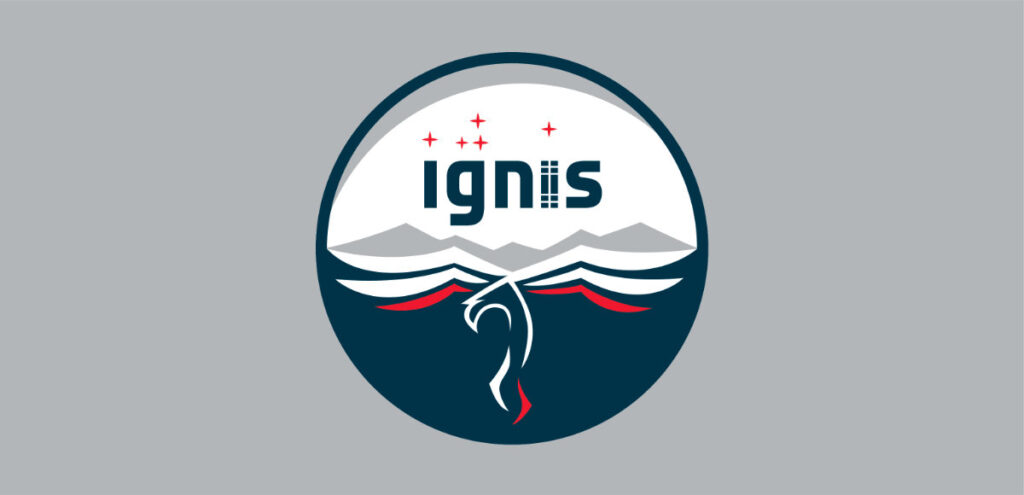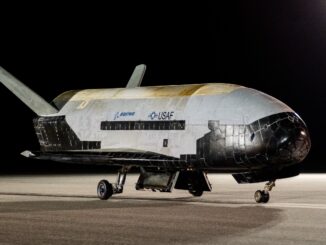 On 2nd December 2024, the European Space Agency (ESA), the Polish Ministry of Development and Technology (Ministerstwo Rozwoju i Technologii – MRiT) and the Polish Space Agency (POLSA) announced Ignis to be the official name of the Polish technology and science mission to the ISS.
On 2nd December 2024, the European Space Agency (ESA), the Polish Ministry of Development and Technology (Ministerstwo Rozwoju i Technologii – MRiT) and the Polish Space Agency (POLSA) announced Ignis to be the official name of the Polish technology and science mission to the ISS.
The Polish space mission to the ISS is an important element of the cooperation between the ESA and Poland, strengthening the growing partnership in the field of commercial human spaceflight under the Axiom Space mission programme. It is a significant step forward for Polish space ambitions, emphasising Poland’s growing contribution to space exploration.
‘We are celebrating the first Polish technology and science mission to the International Space Station. It is the best example of Poland’s dynamic development in space technology and its growing role as a trusted partner of ESA. This mission is an example of international cooperation and ESA’s commitment to the development of advanced technologies through commercial access to space. Together, we are preparing for a future beyond low Earth orbit, highlighting Poland’s capabilities and the power of our shared ambitions. I would like to express my gratitude to the Ministry of Development and Technology for the trust shown in ESA.’ – said ESA Director General Josef Aschbacher.
‘The Polish mission is a technological and scientific endeavour that will benefit not only our country, but also the international community. Thanks to the involvement of Polish companies and scientific institutions, experiments will be carried out which will affect the development of medicine, biology, engineering and space technologies. It is worth mentioning, for example, studies of the human microbiome, tests of new materials or projects in the field of artificial intelligence. This is a great opportunity for the Polish space sector to build unique competences and accelerate the commercialisation of space technologies.’ – added Krzysztof Paszyk, the Polish Minister for Development and Technology.

The Ignis mission will be a part of Axiom Mission 4 (Ax-4), the fourth private mission to the ISS realised by Axiom Space. Polish scientist Sławosz Uznański, who, following a year-long selection process, was chosen in November 2022 as a member of the ESA Reserve Astronaut Corps, has been assigned to participate in the Ax-4 mission as one of four crew members. Since the 1st September 2023, Uznański is an ESA Project Astronaut and undergoes preparatory training in anticipation of his future space mission.
The Polish astronaut will serve as mission specialist under the command of Peggy Whitson, who is also the director of crewed spaceflight at Axiom Space and a former NASA astronaut. Sławosz Uznański will be the second Polish national in space, after Mirosław Hermaszewski, and the first to fly to the International Space Station. The Ax-4 mission crew includes also pilot Shubhanshu Shukla from India and Tibor Kapu from Hungary, also a mission specialist.
Although the four astronauts are still awaiting final mission approval from the Multilateral Crew Operations Panel (MCOP), the international committee responsible for the International Space Station, the Axiom Mission 4 crew is currently undergoing demanding training at training centres around the world.
The training takes place at the ESA’s European Astronaut Centre in Germany but also at facilities operated by NASA, Axiom Space and SpaceX in the United States, as well as by JAXA (Japan Aerospace Exploration Agency) in Japan. The purpose of those training sessions is to prepare the Ax-4 crew for their mission by equipping the astronauts with the necessary skills and knowledge.
The crew will be carried to the International Space Station by the SpaceX’s crewed Dragon spacecraft and Falcon 9 rocket. The Ax-4 mission is scheduled to launch not earlier than April 2025 and is planned to last fourteen days during which the crew will conduct research in microgravity and involve themselves in educational activities.
It is also worth to explain here the meaning of the name of the first Polish mission to the ISS, its logo and the symbolism behind the elements of which it is composed.

The word Ignis in Latin means ‘fire’. As the purpose of the mission is to ignite the Polish space sector, it is fair to say that a quite appropriate name was chosen for it.
The central element of the Ignis mission logo is a white-red eagle, which is a direct and unambiguous reference to the Polish emblem and national colours. The outspread wings of the eagle form the contours of the Tatra Mountains, or more precisely their part called Orla Perć (in English known as the Eagle’s Path). The shape of the eagle’s tail resembles a flame and the second letter ‘i’ in name of the mission takes the form of the International Space Station.
Above the eagle located in the center part of the logo, the stars form the Shield constellation (lat. Scuti, formerly Scutum Sobiescianum, eng. Sobieski Shield). This is a tribute both to Polish history and to the great astronomer from Gdańsk, Jan Heweliusz (1611-1687). In 1684, to commemorate the Polish King Jan III Sobieski, after his famous victory in Vienna, Heweliusz named this constellation Scutum Sobiescianum. The silver line at the top of the patch symbolises the horizon – the dawn of a new era in space exploration.
‘The name of the Ignis mission symbolises the spark of innovation and Poland’s ambitious contribution to space exploration. The partnership between ESA, Poland and Axiom Space represents a significant milestone for commercial spaceflight, enabling a second mission with an ESA project astronaut and underlining Europe’s readiness for advanced space exploration, strengthening its role in shaping the future of space technology.’ – said Daniel Neuenschwander, Director of ESA’s Human and Robotic Exploration Directorate.
The President of POLSA, professor Grzegorz Wrochna, added – ‘The Ignis mission is a landmark event not only for our space sector. Thirteen Polish experiments in the fields of technology, biology, medicine and psychology, prepared by Polish scientists and engineers – will open up new opportunities for Polish research and, in the long term, increase Poland’s competitiveness on the international arena. The Polish ESA project astronaut PhD Sławosz Uznański will be the second Pole in space and thus the best ambassador of Polish science and industry, as well as an inspiration for the next generations.’
If you would like to learn more about Sławosz Uznański and his upcoming mission to the International Space Station, please read our previous articles on this regard:
- A great chance for Poland to have its second ever man in space;
- Poland is another step closer for sending its second man to space;
- Polish astronaut officially assigned for space flight.
In the article ESA press materials were used. Cover photo: Ignis mission patch and name. All photos ©ESA.



